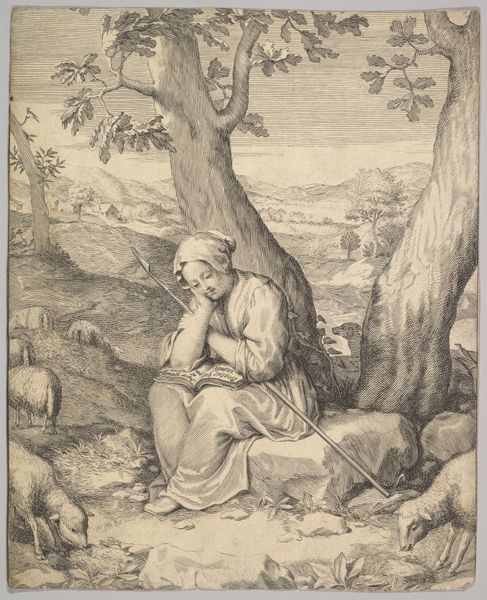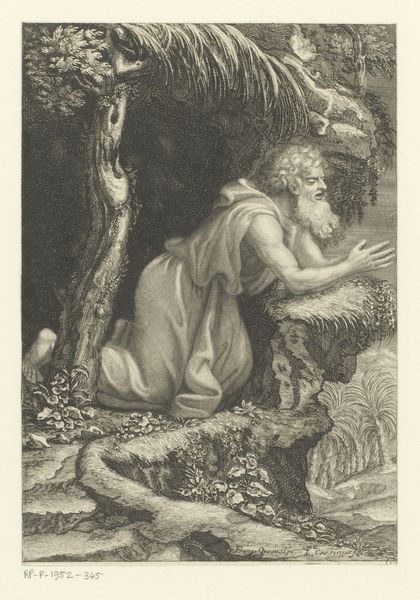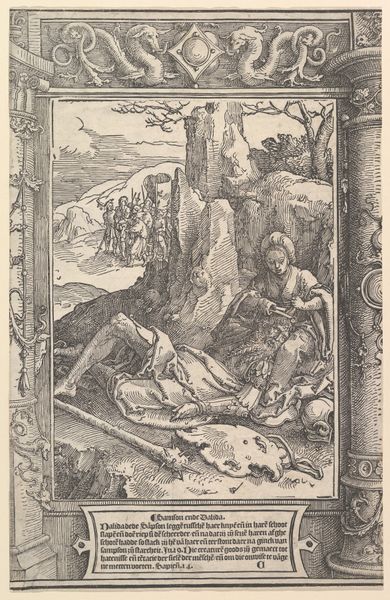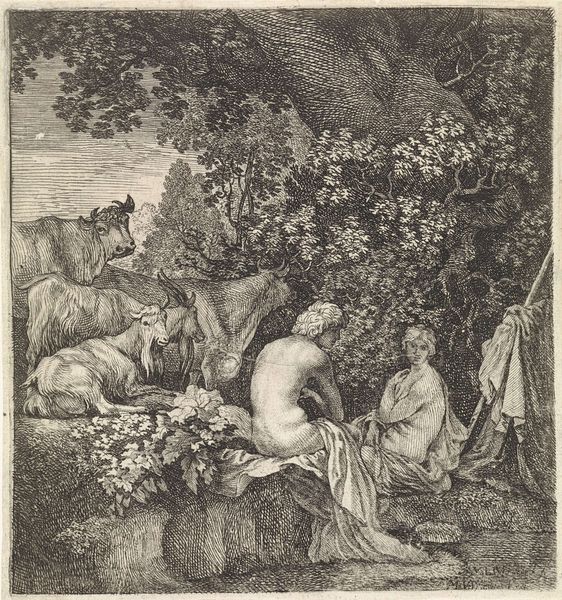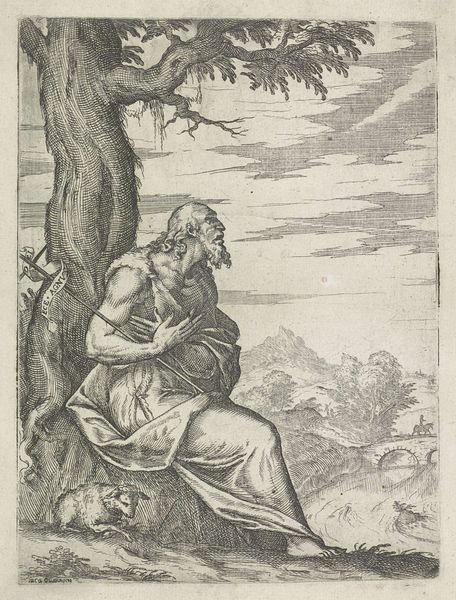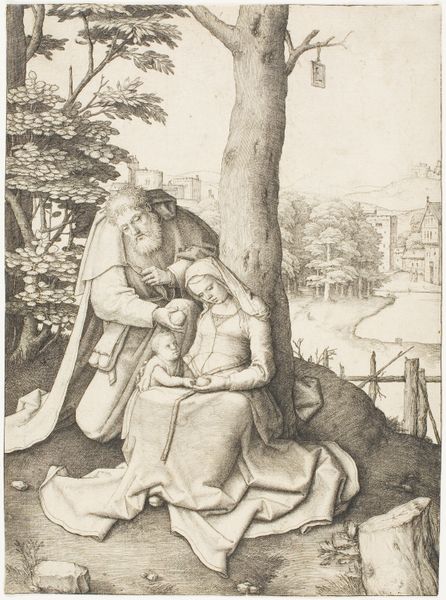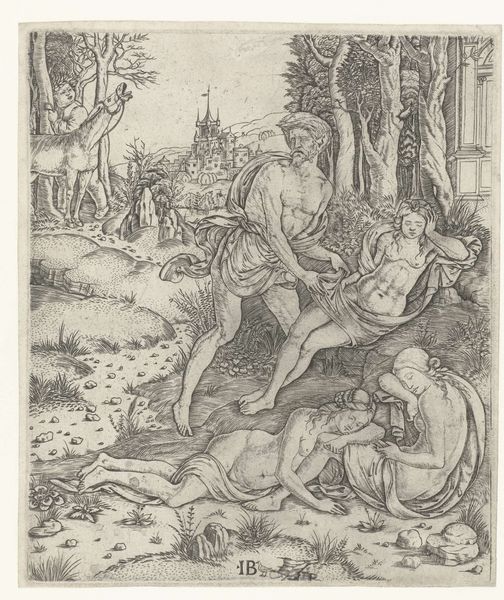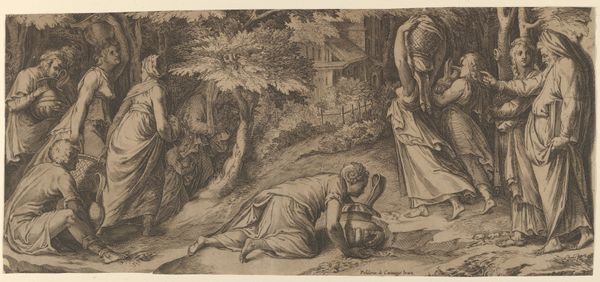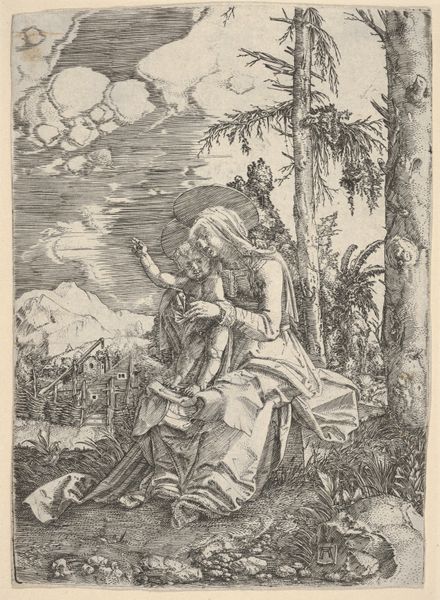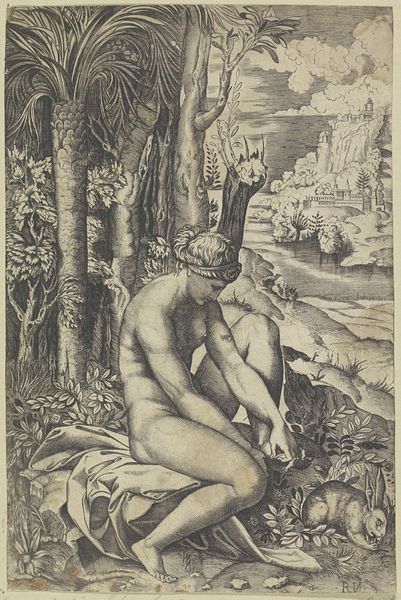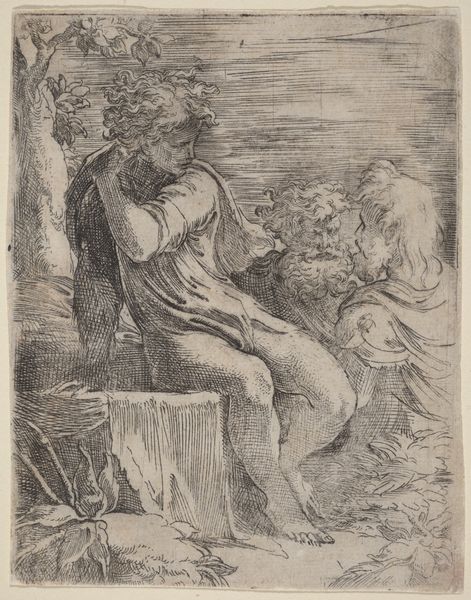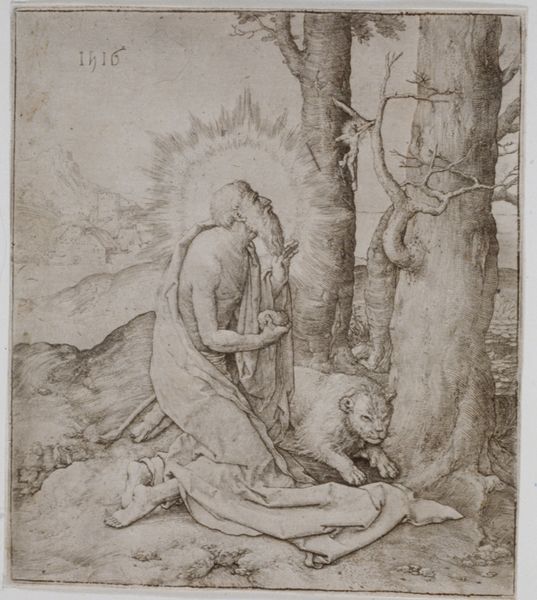
St Jerome kneeling before a crucifix, a skull in his left hand, a lion laying at the left 1495 - 1532
0:00
0:00
drawing, print, engraving
#
portrait
#
drawing
#
allegory
# print
#
landscape
#
figuration
#
form
#
11_renaissance
#
line
#
history-painting
#
italian-renaissance
#
engraving
Dimensions: 5 1/4 x 4 1/2 in. (13.3 x 11.4 cm)
Copyright: Public Domain
Curator: Before us, we have Marcantonio Raimondi’s engraving, made sometime between 1495 and 1532, depicting "St Jerome kneeling before a crucifix, a skull in his left hand, a lion laying at the left". Editor: It strikes me immediately how linear and precise the work is. The light and shadow, rendered solely through line work, creates an atmosphere of intense contemplation. The scene feels almost claustrophobic despite the landscape in the background. Curator: It’s interesting you mention the linear quality, because Raimondi was instrumental in popularizing engravings based on the designs of Raphael. His prints like this one allowed for wider dissemination of Raphael's style and ideas, fundamentally changing the art market. The availability of such prints had huge implications for artistic development and patronage across Europe. Editor: Absolutely, and consider how the formal composition directs the viewer's eye: from the skull, up to St. Jerome’s anguished face, then along the curve of his back to the crucifix in the distance. The landscape, the ruin is like an echo to this reflection about death. It's a very sophisticated deployment of line to build narrative tension. The body of St Jerome acts like a bridge, or an echo from the cross on the upper left, the death's head that he holds in his hand on the lower left and that city over there to the right: a clear symbolic display. Curator: Yes, and in that regard, Raimondi tapped into the burgeoning humanist movement that was popular during the Italian Renaissance and how the image works with a saint deeply engaged in study and introspection. Jerome translated the Bible into Latin and this iconography reinforced the value of knowledge and personal reflection as essential components of religious experience. The print offered a model, so to speak, for pious intellectualism, with Jerome representing the perfect blend of scholarship and devotion, against the backdrop of a decaying empire. Editor: It's interesting how the texture of the saint's clothing is handled. And note how the skull in the saint's hand is depicted: It serves as a stark reminder of mortality but the way the saint holds it and gazes upon it humanizes that symbol; brings a contemplative depth. Curator: I find it fascinating how such engravings normalized and celebrated particular social values through what was quickly becoming a mass medium for art. Editor: Ultimately, Raimondi created here more than a devotional image. It is an invitation for close study—both in terms of its meaning and its visual construction.
Comments
No comments
Be the first to comment and join the conversation on the ultimate creative platform.
